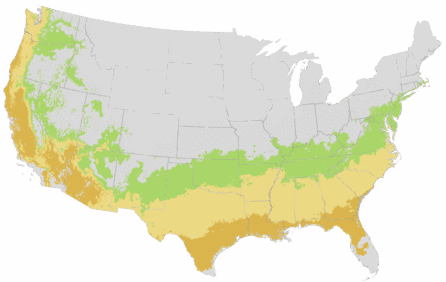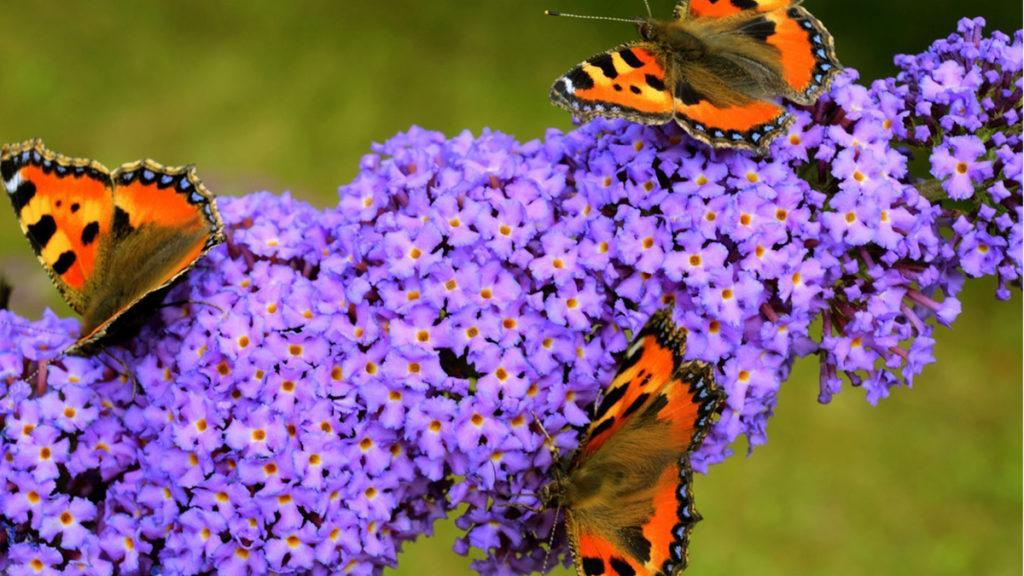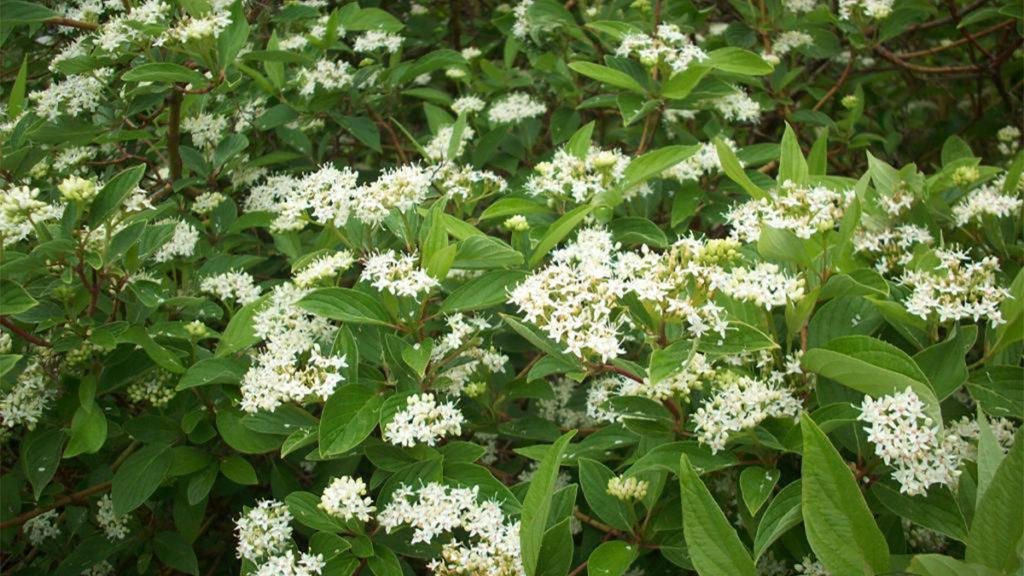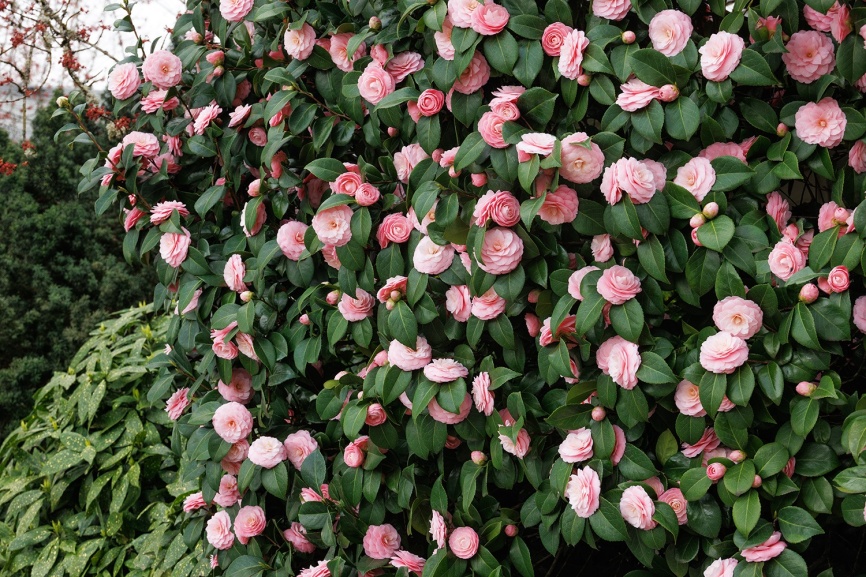You're growing in this Zip Code:
Change LocationDiscover Plants for Your Area
Dwarf Strawberry Tree
Arbutus unedo 'Compacta'
Retailers Near You
| Description | A gracefully branched evergreen shrub with glossy dark green foliage and handsome cinnamon-colored bark. Masses of white flowers yield bright, edible strawberry-like fruits. A fuss-free plant for year-round interest in western gardens. Use as a small specimen tree to anchor a border, or create an informal hedge. |
|---|---|
| Bloom Time | Fall to late winter |
| Deciduous/Evergreen | Evergreen |
| Special Features | Attractive Bark, Easy Care, Ornamental Berries, Waterwise, Edible, Compact Form, Benefits Birds |
| Problems/Solutions | Deer Resistant, Drought Tolerant |
| Growth Rate | Moderate |
| Growth Habit | Rounded |
| Flower Attributes | Repeat Flowering, Showy Flowers |
| Landscape Use | Border, Hedge, Privacy Screen |
| Design Ideas | This handsome evergreen shrub can be grown as a large shrub or multi-trunk small tree, and is best planted where its ruddy, peeling bark can be admired as it matures. Use as a striking year-round focal point in a large waterwise border or on a front bank. Plant in pairs to flank an entryway path; space at least five feet from a patio or path to allow natural, artistic branching to develop and avoid need for pruning. Position three or five, randomly spaced along a back fence or property line to create visual interest. The twisted branching and dark green foliage create an attractive and easy backdrop for lower shrubs, grasses or groundcovers. Plant en masse to create an informal, minimal-care hedge. Flowers and fruit often appear at the same time. Cut stems and boughs make appealing centerpieces for fall and holiday tables, when the flowers and fruit are in prime season. |
| Flower Color | White |
| Foliage Color | Green |
| Companion Plants | Gardenia (Gardenia); Salvia (Salvia); Butterfly Bush (Buddleja); Bottlebrush (Callistemon); Gaura (Gaura); Fountain Grass (Pennisetum); Mock Orange (Pittosporum); Blue Fescue (Festuca); Creeping Thyme (Thymus) |
| Care Instructions | Easily grown in lean, well-drained soil. Water deeply, regularly during the first growing season to establish an extensive root system. Once established, reduce frequency; tolerates drought. Apply a slow-release fertilizer before new growth begins in spring. Prune annually to shape. |
| History | The genus Arbutus, of which there are at least fourteen species of flowering shrubs and trees, is a member of the heath family. Arbutus unedo is indigenous to southern Europe and Ireland. It is related to Arbutus menziesi- commonly called Madrone, Pacific Madrone, Madro'a, or Madro'o, which is native to the coastal ranges from British Columbia to Southern California, and occasionally in middle elevations of Sierra Nevada. |
| Lore | Arbutus flowers are important to honeybees, and the leaves and fruits have been used in herbal and pharmaceutical products. The bark contains high levels of tannins, making it useful in dyes and leather making. The strawberry-like fruits are palatable to both wild and human foragers. Having a sweet, woodsy flavor somewhat reminiscent of apricot and guava, the ripe fruit is high in vitamin C and can be eaten fresh, cooked into jams or added to pies, or made into wine or spirits. More often, the fruit is appreciated by birds and small mammals. Note: if consumed, under-ripe fruit can cause nausea and overripe fruit can cause mild intoxication. The name unedo is attributed to Pliny the Elder, a Roman author and naturalist, who in 50 AD allegedly claimed "unum tantum edo," meaning "I eat only one." |
| Description | A gracefully branched evergreen shrub with glossy dark green foliage and handsome cinnamon-colored bark. Masses of white flowers yield bright, edible strawberry-like fruits. A fuss-free plant for year-round interest in western gardens. Use as a small specimen tree to anchor a border, or create an informal hedge. |
|---|---|
| Bloom Time | Fall to late winter |
| Deciduous/Evergreen | Evergreen |
| Special Features | Attractive Bark, Easy Care, Ornamental Berries, Waterwise, Edible, Compact Form, Benefits Birds |
| Problems/Solutions | Deer Resistant, Drought Tolerant |
| Growth Rate | Moderate |
| Growth Habit | Rounded |
| Flower Attributes | Repeat Flowering, Showy Flowers |
| Landscape Use | Border, Hedge, Privacy Screen |
|---|---|
| Design Ideas | This handsome evergreen shrub can be grown as a large shrub or multi-trunk small tree, and is best planted where its ruddy, peeling bark can be admired as it matures. Use as a striking year-round focal point in a large waterwise border or on a front bank. Plant in pairs to flank an entryway path; space at least five feet from a patio or path to allow natural, artistic branching to develop and avoid need for pruning. Position three or five, randomly spaced along a back fence or property line to create visual interest. The twisted branching and dark green foliage create an attractive and easy backdrop for lower shrubs, grasses or groundcovers. Plant en masse to create an informal, minimal-care hedge. Flowers and fruit often appear at the same time. Cut stems and boughs make appealing centerpieces for fall and holiday tables, when the flowers and fruit are in prime season. |
| Flower Color | White |
| Foliage Color | Green |
| Companion Plants | Gardenia (Gardenia); Salvia (Salvia); Butterfly Bush (Buddleja); Bottlebrush (Callistemon); Gaura (Gaura); Fountain Grass (Pennisetum); Mock Orange (Pittosporum); Blue Fescue (Festuca); Creeping Thyme (Thymus) |
| Care Instructions | Easily grown in lean, well-drained soil. Water deeply, regularly during the first growing season to establish an extensive root system. Once established, reduce frequency; tolerates drought. Apply a slow-release fertilizer before new growth begins in spring. Prune annually to shape. |
|---|
| History | The genus Arbutus, of which there are at least fourteen species of flowering shrubs and trees, is a member of the heath family. Arbutus unedo is indigenous to southern Europe and Ireland. It is related to Arbutus menziesi- commonly called Madrone, Pacific Madrone, Madro'a, or Madro'o, which is native to the coastal ranges from British Columbia to Southern California, and occasionally in middle elevations of Sierra Nevada. |
|---|---|
| Lore | Arbutus flowers are important to honeybees, and the leaves and fruits have been used in herbal and pharmaceutical products. The bark contains high levels of tannins, making it useful in dyes and leather making. The strawberry-like fruits are palatable to both wild and human foragers. Having a sweet, woodsy flavor somewhat reminiscent of apricot and guava, the ripe fruit is high in vitamin C and can be eaten fresh, cooked into jams or added to pies, or made into wine or spirits. More often, the fruit is appreciated by birds and small mammals. Note: if consumed, under-ripe fruit can cause nausea and overripe fruit can cause mild intoxication. The name unedo is attributed to Pliny the Elder, a Roman author and naturalist, who in 50 AD allegedly claimed "unum tantum edo," meaning "I eat only one." |
Retailers Near You
About Us
We have been pioneers and craftsmen in the art of growing plants for nearly
100 years. Since our founding in Southern California by Harry E. Rosedale, Sr.
in 1926, we have been absolutely dedicated and obsessed with quality.
We have been pioneers and craftsmen in the art of growing plants for nearly 100 years. Since our founding in Southern California by Harry E. Rosedale, Sr. in 1926, we have been absolutely dedicated and obsessed with quality.








